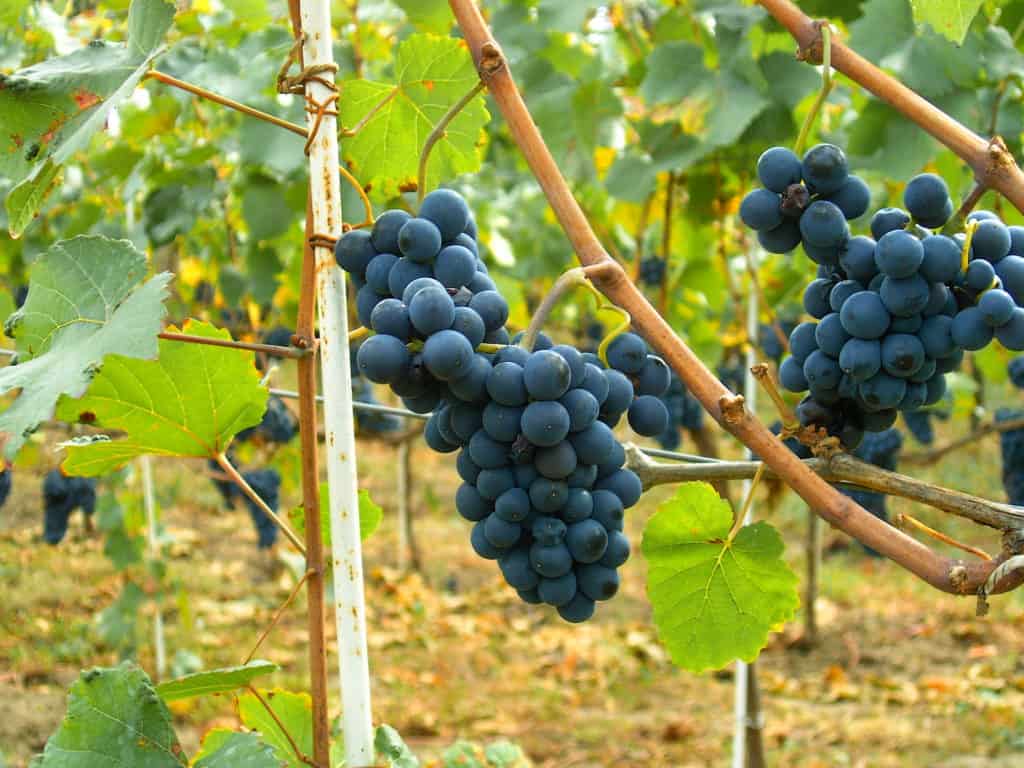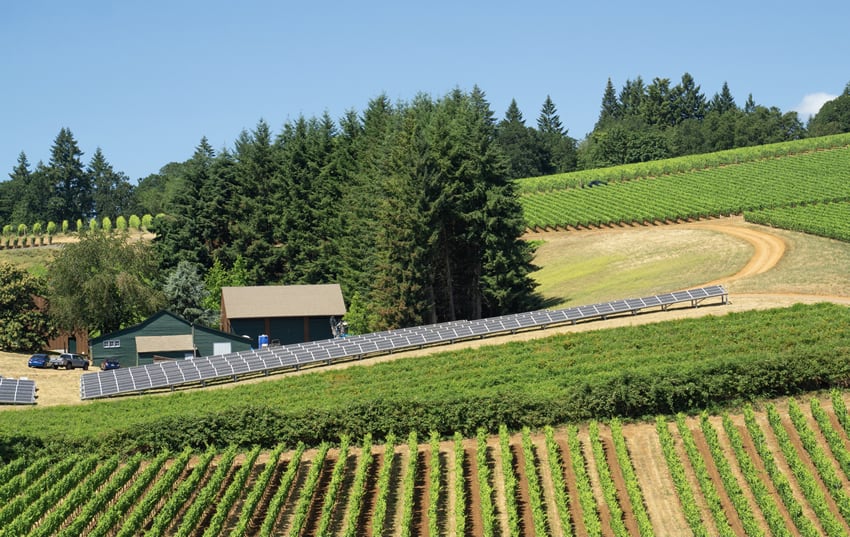Pinot Noir: the most challenging cultivar of them all
Although a delicious, fruity, light wine – the Pinot Noir grape is so delicate due to its sensitive skin that burns quickly, making fungus and rots a real threat. On top of that, Pinot Noir doesn’t offer as much yield as other varietals – which is another challenge on its own.
But, any wine-lover can tell you, that when a Pinot Noir is in the glass and on the lips, it makes all these challenges oh so worth it. So if Pinot Noir is so challenging, where are the best regions to grow it? Cool climate regions offer Pinot Noir the best environment – as it’s less likely to burn and it keeps the acidity at a reasonable level. Any area close to the ocean is ideal – the closer, the better.
Want to learn more about Pinot Noir? What to put your newfound knowledge to the test? Check out our listing of wine schools in your area.

Elgin in South Africa
Elgin is the coolest wine region in South Africa, only reaching temperatures of about 25°C – allowing Pinot Noir to grow ideally, will just the right amount of acidity. Interestingly, Elgin is also the only wine region in the country to be surrounded by mountains – and these slopes offer different ways for the grapes to develop and mature.
The Pinot Noirs in the region are grown in different soil – heavy red clay, sandstone, shale, and Kaolinite clay. It should come as no surprise then that the Pinot Noirs from this region are highly fruit-forward and with highly concentrated flavors because of the low yield and the cool climate.
Martinborough in New Zealand
Martinborough is known as New Zealand’s most exciting Pinot Noir region. The Pinot Noirs from this region have been listed in the Top 100 World Listings, recognized by several international wine-writers.
The terroir and climate are partly the reason for these wines’ successes: stony, limestone, and clay soils are predominantly found in the region. The tremendous amount of rain throughout the year ensures a cooling effect on the vines – allowing Pinot Noir grapes to reach their needed potential. Manual pdf Average temperatures don’t reach much higher than the early twenties – allowing the grape to ripen slowly and perfectly.
Burgundy in France
Burgundy is considered the best place in the world to be growing Pinot Noir – and so it is being done. It is, in fact, so ideal for growing Pinot Noir that Pinot Noir from this region is called Red Burgundy.
This region has over 400 different soil types, but the predominant ones are a mixture of limestone and clay. The temperatures vary, with summers in Burgundy being warm and the winters freezing. However, it’s said that the region’s coolness is just right to allow the grapes to ripen – sometimes, barely making it.
Tasmania in Australia
Tasmania’s uniqueness lies in the fact that it is a small island just off Australia. The constant ocean breezes that surround the area regulate the temperature to a maximum of 26°C and allow for the perfect, cool environment for Pinot Noir.
Tasmania does also have gusty winds and chilling colds – but similarly to Elgin – the vineyards are sheltered by mountains in the area.
Although Tasmania’s wine production is extremely low compared to the rest of Australia, the conditions here are on point for Pinot Noir – with all the right combination of clay, limestone, and sandstone soil to ensure the Pinot Noir grapes develop exceptional quality.
Valle d’Aosta in Italy
We can find the scarcely populated Valle d’Aosta region way north, almost touching the French border. The soil in this area is extremely rocky, forcing the vines to fight to survive – this, in turn, creates some robust and high-quality vines.
The temperatures here are warm and dry – but the cold nights allow a good balance and opportunity for Pinot Noir to flourish.
Although this region does produce some stunning wines, the production is tiny, and it is quite a find if you are able to get your hands on a Pinot Noir from this region.
Russian River Valley in California
The Russian River Valley was one of the first regions formally recognized as an “American Vinicultural Area” and produced some of the world’s most loved wines. This region is cooled by the Pacific Ocean Breeze and a fog that settles in the area most nights. Apparently, without the appearance of this fog, the area would be too warm and dry for the growth of cool-climate wines like Pinot Noir. The summer temperatures here can climb to a scorching heat – but due to a hill that runs down the region, most vineyards fall in a shaded area and stay relatively cool. In t e area that isn’t shaded and the temperatures are hot, other cultivars are planted and flourish.
Willamette Valley in Oregon
Oregon, especially the Willamette Valley, has some of the most interesting soil of any region: A combination of rich, fertile Volcanic and sedimentary soils. This interesting soil combo is formed due to three reasons: Firstly, this region was once entirely submerged by ocean water, volcanic eruptions that occurred, and melting glaciers that created valleys in this region.
As you can imagine, this unique soil plays a significant part in giving the Pinot Noir from this region unique characteristics.
Oregon temperatures stay relatively cool throughout the year, with coastal breezes controlling it.

Patagonia in Argentina
Nestled in the most southern tip of Argentina lies the beautiful region of Patagonia. Although the Patagonia region receives extremely low rainfall during the year, artificial canals from the 17th century capture the rainwater used by the vines.
The dilemma that most Pinot Noir grapes have concerning rot is almost non-existent in this region due to the constant, strong winds that this area encounters – it makes the growth of rot impossible. The temperatures of the region, in summer, are on average about 23°C, and there is almost constant sunlight – but the cooling wind counterbalances the effects.
Final Thoughts
This article aims to show the importance that terroir and climate play in the development of a vine and, essentially, a wine. Pinot Noirs prefer a cooler climate to reach their full potential truly. With a cool ocean breeze and tough soil, this varietal does incredible things. Check out our overview of how to become a certified sommelier.



